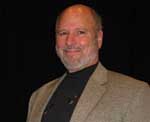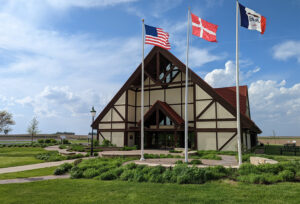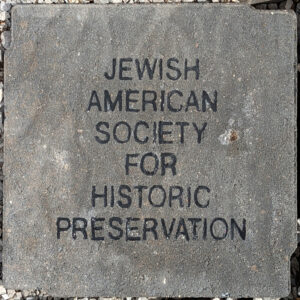By Jerry Klinger

It is called by some the “legend of the Little Dunkirk.” It was no legend.
There are legends about the Jews in Denmark after the Nazi occupation of the country in April 1940. One popular legend was when the Nazis ordered all Danish Jews to wear the Yellow Star of David Armband, King Christian X of Denmark rode out on his horse the next day with a Yellow Star of David on his arm as a moral example to the Danish people. Shortly, all Danes, wore the Yellow Star of David frustrating the Nazis. The Germans could not identify the Jews.
It is a great story of moral courage. It did not happen. What did happen was an even greater story of national courage and resistance to the Nazi order for the deportation and extermination of all the Jews in Denmark.
From 1940 to 1943, the Nazi occupation of Denmark was relatively benign. Denmark quickly surrendered in 1940. Denmark was no match for the Nazi war machine.

The Danes surrendered with the condition that they would be subservient to Nazi Germany in return for relative autonomy. Denmark became the “Creamery,” the food basket for Germany. The Germans left Denmark alone.
The Jews in Denmark had long been integrated into Danish life. Antisemitism, though it did exist on the fringes of Danish society, was rare and very much unacceptable. The Jews lived unmolested and free.
February 1943, the Germans suffered a massive defeat at Stalingrad. In August 1943, after the Battle of Kursk, the writing was plain for the world to see. The Germans were going to lose militarily. The Germans were no-where near defeated with their second war objective, the War Against the Jews. The extermination of the Jews moved into high gear.
Denmark read the tea leaves. Resistance to the Germans grew steadily. On August 29, 1943, the Germans took full control of the internal affairs of Denmark. Hitler ordered Denmark be made “Judenrein,” cleaned out of all Jews.
The Nazis sent Obergruppenfuher Werner Best, as the Reich plenipotentiary to rule Denmark. Best had organized the SS-Einsatzgruppen paramilitary death squads to murder Jews in the East. He had proven his Jew cleansing ability in France. Best was ordered to “clean” Denmark from its Jews.
Georg Duckwitz, a Nazi career diplomat, who had been working in the Nazi’s Embassy, was selected by Best as his right-hand man. It was a fateful decision.
During September 1943, the Nazis drew up plans for the deportation of Jews. The Jewish roundups were to take place in early October, coinciding with the Jewish High Holidays, a favorite time for the Nazis. Duckwitz was directly involved.
Duckwitz understood Danes. He understood Danes were unlike many other countries that the Nazis had occupied. They did not view their Jews as foreign vermin to be exterminated. The Danes saw the Jews as Danes. He understood the Danes would see an attack on the Danish Jews as an attack on Denmark itself.
Alarmed, without Best’s knowledge, Duckwitz flew to Berlin to try and get the deportation order of the Jews reversed. He failed.
Duckwitz tipped off the Danish resistance about the order to make Denmark Judenrein. The Danish resistance began to organize how to save the Jews. There were nearly 8,000 in Denmark. Where could they be hidden? Where could they go for safety? Time was of the essence.
Duckwitz flew to Sweden and spoke directly with the Swedish Foreign Minister. Would Sweden be willing to help? Sweden was a strong ally of Nazi Germany providing massive amounts of raw materials for the Nazi war machine. The Swedish military was no match for the Nazis. Sweden did not have a strong reputation of taking in non-Swedish Jewish refugees.
Duckwitz knew he could be betrayed at any step. He hated the Nazis with a hate that reached deep into his soul. He knew he was risking his life.
Perhaps it was because of diplomatic wrangling, Sweden knew Germany was losing the war. Perhaps it was the personal call from Swedish American film star Greta Garbo to the Foreign Minister and his subsequent talk with famed Danish scientist Niels Bohr, incredibly Sweden agreed to take in the Jews.
Sweden agreed to take in the Jews but only if the Danes could get them to Sweden, as Sweden would not bring them over.
Denmark swung into action. Overnight, Jews were taken in by Danes everywhere and hidden. The Danes organized secret convoys of Jews towards towns like Elsinore and the narrowest points to Sweden. A fleet of small boats, some sailing under the shadow of Castle Kronborg site of Shakespeare’s Hamlet, ferried the Jews across the straights to Sweden. In a span of a few nights, over 7,000 Jews and 800 non-Jewish spouses were smuggled to Sweden, to safety.
The Germans knew nothing of the operation. Incredibly, from somewhere within the German Danish Coastal Command every single one of the 33 Nazi coastal patrol boats had been ordered into harbor for “repainting” during the exact days the Jewish evacuation was taking place. Coincidence…perhaps.
Ninety five percent of the Jews of Denmark were saved by the courage, the heroism, and the morality of the Danish people. The 5% that were not saved were rounded up and sent to Concentration Camps. They had been discovered; some had been betrayed.
In the entire terrible darkness of the Holocaust, no people, no national effort, without regard for the risk, had been made by any country to save Jews…except for Denmark. Tiny Denmark held high a candle of humanity and decency during the horror of the night.
After the War, Werner Best was tried as a war criminal. He escaped punishment claiming his health was too frail to be tried. Georg Duckwitz was honored by Yad Vashem as a Righteous Among the Nations. In Jerusalem a special square of respected honor — Denmark Square — was built.
The Danes went back to their lives. They never sought particular gratitude, though it was due them, for doing the right thing.
 The Jewish American Society for Historic Preservation (JASHP) learned of the National Danish American Museum in Elk Horn, Iowa. The museum’s mission is to “celebrate Danish roots and American dreams.”
The Jewish American Society for Historic Preservation (JASHP) learned of the National Danish American Museum in Elk Horn, Iowa. The museum’s mission is to “celebrate Danish roots and American dreams.”
They have a paver program to support their maintenance and programming. JASHP funded a paver. The museum said they were very honored to have the simple paver. As the years pass, they said, the young need to know about the foundational spirit of Danish Americans, the older ones need to reflect back upon it.
The paver was sited in May with specific intent for prominence in the Jens Jensen Heritage Pathway. The pathway is in front of the Museum leading directly to the flagpoles where the flags of the U.S., Denmark, and Iowa fly proudly. They wanted the word “Jewish,” a word seemingly out of place in Iowa where Jews are not many, to be easily seen. They wanted visitors to see the word and to ask what was and is the relationship of the Jews to Denmark.
*
Jerry Klinger is the president of the Jewish American Society for Historic Preservation, www.JASHP.org